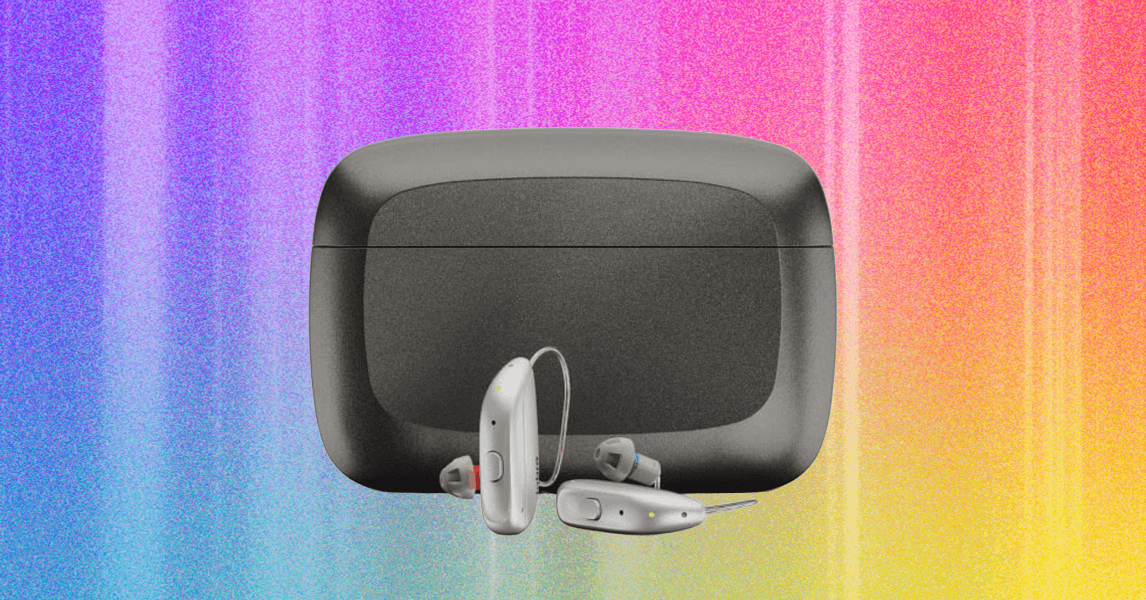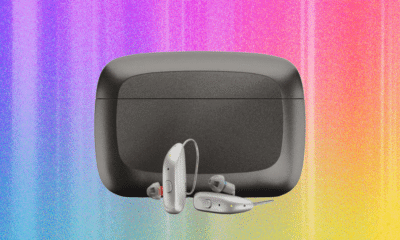Tech
LG Promo Codes and Coupons: 50% Off

LG makes some of the best TVs you can buy. Its OLED TVs in particular are perennial favorites at WIRED, with C-series models like the C4 (9/10, WIRED Recommends) providing among the best performance for your dollars on the market. LG is about way more than TVs of course. The Korean brand offers multiple products across the A/V landscape, from soundbars to Bluetooth speakers, along with a host of other products like home appliances, laptops, and more. Save over 40% with LG promo codes and online exclusive discounts on home appliances, laptops, and more tech.
Save 20% With Today’s LG Promo Codes
If you’re looking to save on LG gear today, you can get up to 20% back on your first order with select eligible products when you sign up for LG rewards with your email address. Simply go to the My LG Membership rewards page, follow the instructions to sign up, fill your cart, and use code WELCOME20.
If you’re ready to check out one of those TVs mentioned above, LG’s C4 and the ultra-bright step-up model G4 are both eligible right now in 77-inch sizes. Otherwise, there are plenty of other products to shop currently on sale that you stack with MyLG Rewards for 5% back and points on every purchase.
Labor Day Discounts: 40% Off TVs, Fridges, Washers, and More LG Coupons
There are also online exclusive offers for the LG’s Labor Day Savings Event continuing to roll out this month. Deals include up to 67% off TVs and appliances, perks like free delivery to the room of choice, and free installation included on a variety of appliances purchased. Some of our favorites are on deep discount, like fridges as low as $599, French Door Refrigerators up to $1,700 off, washer/dryer combos up to $1,000 off, and Smart Wifi enabled ovens and electric/gas ranges up to a whopping $1,900 off.
Fall is near, which means football season—and staying inside more generally—is on the horizon. Now’s a great time to invest in a TV that will last. Samsung has sales just in time, with up to $300 off LG OLED AI Smart TVs, from 55 to 100 inches. Plus, you can get $900 off the new 77 inch Class OLED evo AI C5 4K, now $2,800. There’s also savings of up to $500 off, with same-day pickup in store on select models if you want to purchase with online discounts and get it ASAP—perfect for those in the middle of binging a season when the vertical bars of death appear on the screen. There’s also deals for $499 off the 86 inch QNED evo AI Mini LED 4K Smart TV and $399 off the 75 inch model.
Save Up To $1,000 With LG Bundle Offers and Back to School Tech Deals
Summer is winding down, and back to school deals are back. With discounts of essential academic tech, like up to 40% off lightweight laptops and monitors—plus an extra 5-10% off when you bundle 2 or more). Some bestsellers we’ve seen trending this season are UltraGear Gaming Monitors and Curved UltraWide QHD Monitors. Plus, if you want an upgrade, there’s up to $1,000 off LG gram Copilot/AI enabled laptops. If you need to stock up on tech, LG and LG STUDIO appliances have bundle offers, which include up to $1,000 off with Instant Rebate specials and extra $150 off with trade-in (which includes free delivery).
There are also bonus discounts if you buy LG STUDIO models, including the LG Studio UltraHeat gas cooktop for $600 off, discounts of $800 for the Instaview Electric Slide-in range, and $350 off a Over Range Convection Microwave with Air Fryer.
Students, Teachers, and First Responders Get a 10% Off LG Promo Code
Looking for further discounts? If you’re a teacher, student, or first responder, you could receive an additional LG Promo Code for more savings. To see if you’re eligible, simply click on the LG Appreciation Program link and follow the info to register your account. Exclusive discounts include free installation on refrigerators, cooking ranges, and washer/dryers, including select LG Studio and LG Signature appliances. You could also get year-round savings on LG products with a minimum guaranteed discount of 10% compared to LG.com sale prices.
Get up to 20% Back With MyLG Rewards or 5% Off Referral Code
With MyLG Rewards, you can get up to 20% back in rewards, as well as exclusive deals, extended warranties, and free installation. Eligible rewards members can get an additional 5% off LG products if you refer a friend or loved one with the LG Referral program when they make an eligible purchase of $200 or more. They’ll get 5% off, and you’ll earn 5,000 MyLG Rewards points, so it’s a win-win. This coupon is stackable with other promotions too, so you can still take advantage of the many other featured discounts.
When to Get the Best Discounts on LG of the Year
Black Friday and Cyber Monday are often the biggest times to save on LG gear, but the brand has promotions going all year. Last year’s LG TV models like the C4 and G4 are both on sale right now, as again the company clears out stock for 2025. Those are frankly the best deals you’ll likely see this year, including Black Friday, but if you’re not interested in last year’s models, there are already some discounts on the next wave.
LG’s new evo G5 OLED TV is poised to be one of the brightest, most beautiful TVs released this year. I saw it in person at CES 2025, and from my brief time with it I can already tell you its new quad-stack panel is a scorcher that keeps the perfect black levels and fabulous colors for which LG OLED TVs are praised. They’ve rolled out their latest version, the OLED evo AI G5 4K Smart TV, enhanced with AI for more personalization, an ultra crisp picture, and even less lag time. On top of up to $400 off, get free professional wall mounting, a free $200 TV stand, and $200 off when you bundle with a matching soundbar.
Looking for something for the kitchen or laundry room? You could save $200 on select Heat Pump laundry bundles, or up to 45% off on LG’s best-selling appliances. There are plenty of other ways to save, so if you’re excited to get your LG on, check out these deals now.
Tech
After OpenAI’s new ‘buy it in ChatGPT’ trial, how soon will AI be online shopping for us?

Buying and selling online with e-commerce is old news. We’re entering the age of A-commerce, where artificial intelligence (AI) is increasingly able to shop for us.
At the end of September, OpenAI launched its “Buy it in ChatGPT” trial in the United States, using AI agents built to interact with us to do more of people’s browsing and shopping. The technology is known as “agentic commerce,” sometimes shortened to A-commerce.
American shoppers can now ask for shopping suggestions from US Etsy sellers within a ChatGPT chat—then buy a product immediately, without having to navigate away to look at individual shop pages.
Looking ahead, big companies are now spruiking the next phase of “autonomous A-commerce,” which experts predict could see AI checking out for some shoppers within the next few years.
But is handing over more of our shopping decisions to AI a good thing for us as shoppers, for most businesses or for the planet?
What’s possible right now?
For most people using AI to help them shop, the AI agent is still mostly just searching and recommending products. It still has to shift the customer to the retailer’s website to complete the checkout.
For instance, AI can do most steps to order a pizza—though sometimes slower than doing it yourself—apart from paying at the end.
That’s when we step in: we still need to sign in if we’re part of a loyalty program, enter our personal and delivery details, then finally pay.
With the “Buy it in ChatGPT” trial now underway in the US, the customer never leaves the chat, where the checkout is completed.
Shopify has said more than 1 million of its merchants will soon be able to check out within ChatGPT too. Major US retailer Walmart has similar plans.
What’s next?
In May 2025, Google launched “AI mode shopping.” Some features, like using a full body photo of yourself to virtually “try-on” clothes, are still only available for US shoppers, with limited brands.
At the time, Google said its next step will be a new “agentic checkout […] in coming months” for products sold in the US. It would give shoppers the option of tracking a product until its price drops to within a set budget—then automatically prompting them to buy it, using Google Pay. That checkout option is yet to launch.
Credit card giants Visa and Mastercard are also working on ways to make it easier for AI agents to shop for us.
Both the current and coming forms of A-commerce have the potential to spread fast worldwide, because they run largely on the same global digital infrastructure powering today’s e-commerce: identity, payments, data and compliance.
Consultants McKinsey forecast: “We’re entering an era where AI agents won’t just assist—they’ll decide.”
What are the risks and benefits?
Overspending is a big risk.
A-commerce removes many steps of the shopping journey found in e-commerce or physical commerce, leading to fewer abandoned carts and potentially higher spending.
People would need to trust AI systems with their private data and preferences, and ensure they’re not misused. Permitting AI to shop on your behalf means you are responsible for the purchase and can’t easily demand a refund.
AI systems might focus on price or speed, but not always for what you value most: from how sustainable a product is, to the ethics of how it was made.
Fraud could be a real issue. Scammers could set up AI storefronts to trick the AI, collect the money and never deliver.
Banks will need to figure out how to spot fraud, process refunds, and manage consent when it’s not a person pressing “buy,” but an algorithm doing it on their behalf.
Regulators will need to consider A-commerce in their competition, privacy, data, and consumer protection rules.
A-commerce could offer some limited environmental benefits compared to today’s way of shopping, such as fewer missed deliveries—if you’re happy to share your calendar so your AI agent knows your availability.
But greater consumption would also mean greater environmental impacts: from AI’s voracious energy and water use, to the damage done by fast fashion, more deliveries and indirect pollution.
Changing how we shop and do business
If you have even a small business, the way you make your products and services discoverable online will have to change.
Instead of just having websites built for customers and search engines, all businesses will need to build AI accessible online stores. Those will not look like the websites we see today. It will be more like a data-soaked digital catalog, filled with everything an AI agent needs to place orders: product specifications, price, stock, ratings, reviews, through to delivery options.
All those years of bigger brands buying attention and dominating search results might start to matter less, if you’re able to build a good AI accessible online store. It could be a quiet but massive shift in how trade works.
However, each business’s visibility will depend on how AI systems read and rank sellers. If a business’s data isn’t formatted for AI, it may disappear from view. That could give larger players an edge and once again make it harder for smaller businesses to compete.
How much are we happy to delegate our shopping to AI agents? Our individual and collective choices over the next few years will shape how radically shopping is about to change for years to come.
This article is republished from The Conversation under a Creative Commons license. Read the original article.![]()
Citation:
After OpenAI’s new ‘buy it in ChatGPT’ trial, how soon will AI be online shopping for us? (2025, October 25)
retrieved 25 October 2025
from https://techxplore.com/news/2025-10-openai-buy-chatgpt-trial-ai.html
This document is subject to copyright. Apart from any fair dealing for the purpose of private study or research, no
part may be reproduced without the written permission. The content is provided for information purposes only.
Tech
Why electricity costs so much in the UK (it’s not all about the weather)

The UK government is reportedly considering abandoning its goal of removing fossil fuels from the country’s electricity supply by 2030 in an attempt to keep energy bills down.
This is understandable given that the UK is already one of the most expensive places in Europe to use electricity, something that—despite plenty of investment in relatively cheap renewable energy—is unlikely to change any time soon. In fact, bills remain high even when wind farms are spinning at full capacity.
However, neither a drive to decarbonize the grid—which is needed for other reasons—nor abandoning this target is going to make energy significantly cheaper. The reason for this lies in how electricity markets work, and in the geography and policies that shape the UK’s energy system.
To begin with, wholesale electricity prices are determined in a way that essentially means that everyone has to pay for the most expensive source of electricity used at a given time, which in the UK is mostly gas power plants.
The gas which is burned to power the UK’s lights and kettles has to be liquefied, shipped from the US or Qatar amid global bidding wars, and then converted back into its original state. High gas prices drive high wholesale prices, which directly translate into high electricity bills.
Cheaper renewable energy sources (the cost of producing solar, wind or nuclear electricity is very low) have little effect. This is partly because while the operating cost of renewable electricity is very low, the cost of setting it up is not.
To encourage companies to build new generation capacity, the government must offer them a guaranteed price for the electricity they produce, to compensate for their costs. For a wind farm, this would include money for planning applications, as well as buying and installing turbines and electrical equipment.
Bringing different sources of electricity to consumers also requires expensive infrastructure investment. In the UK, for example, grid capacity is not where it needs to be after decades of low investment.
Nearly 40% of the electricity produced by Scottish wind farms has been wasted so far this year, because the grid was not able to move it to other parts of the UK or store it.
Overall then, consumers’ bills will be high, both now and in the future, because of the combined costs of imported gas, infrastructure and the guaranteed prices for producers.
Most calls to decrease these bills effectively come down to suggesting moving some of these costs on to taxpayers—so effectively from one bill to another. This is what happened in France, where “cheap” nuclear electricity is the result of vast amounts of government spending in the past. The French may not see UK-level energy bills, but they do have higher taxes and public debt.
Clouds on the horizon
Despite these challenges, successive UK governments have committed to continuing investment in new technologies, because dependence on imported, polluting and volatile fossil fuels is deemed too risky. Postponing the full transition to renewables, as reported in the Guardian, is effectively a bet that gas prices will decrease in the short term, and that the UK will be able to commission cheaper renewables later on.
But cheaper renewables present their own problems, because they play different roles. Solar and wind are cheaper, but intermittent. Nuclear is the most expensive but works all the time.
This all presents a challenging situation for UK consumers. New nuclear faces very long safety and planning procedures and the national grid needs to be modernized. The decision to cancel an ambitious project to get solar electricity from Morocco may be regretted.
But the main factor is simply geography and timing. Partly due to its location, the UK has become a world leader in wind power, a renewable technology that seems to be taking a less important global role than solar. And while the cost of solar production is decreasing steeply, the learning curve is slower for wind.
And there is no obvious way to increase the number of sunny hours in England. A country like Spain, with both a lot of sun and wind, has a much easier job transitioning to cheap renewables than the UK.
So, for all the frustration over high bills, the UK’s options are limited. Geography gives us wind, not sunshine. Policy has delivered world-class renewables, but also a grid struggling to carry their power.
The future will depend on whether new technologies, including cheaper batteries, tidal power and small modular nuclear reactors can fill the gaps left by weather and planning delays.
None of this will be easy or cheap. But the alternative—continued dependence on imported, volatile fossil fuels that make bills hostage to global crises—is worse.
UK consumers face a future where electricity remains more expensive than much of Europe, not only because of policy choices, but because it lacks the sunshine that’s driving costs down elsewhere. Betting on emerging technologies is the only way to close that gap.
This article is republished from The Conversation under a Creative Commons license. Read the original article.![]()
Citation:
Why electricity costs so much in the UK (it’s not all about the weather) (2025, October 25)
retrieved 25 October 2025
from https://techxplore.com/news/2025-10-electricity-uk-weather.html
This document is subject to copyright. Apart from any fair dealing for the purpose of private study or research, no
part may be reproduced without the written permission. The content is provided for information purposes only.
Tech
Dealing With Hearing Loss? These Over-the-Counter Hearing Aids Could Help

If you’re spending hundreds or thousands of dollars buying an OTC hearing aid, make sure you’re getting a product that offers a sustainable long-term solution to your hearing loss needs. Aside from the obvious things like sound quality, take a few minutes to look into these specs.
What size and style works best for you? Most hearing aids on the market are classified as either behind-the-ear (BTE) or in-the-ear (ITE). BTE hearing aids are probably what you think of when you picture a hearing aid, consisting of a plastic case that contains the electronics, a thin cable that goes over the ear and inside the canal, and a tiny speaker known as a “receiver,” which sends boosted audio from a person’s surroundings into their ear. By contrast, ITE models are self-contained units that look like a standard pair of wireless earbuds. In-the-ear hearing aids are popular for their incognito aesthetic, and they tend to be a lot easier to pop in and out than their behind-the-ear counterparts. Still, contemporary BTE hearing aids are significantly smaller than the ones “back in the day.” It just comes down to what fits you most comfortably.
Replaceable or rechargeable batteries? Much like wireless earbuds, most OTC hearing aids are equipped with rechargeable batteries and (usually) a portable charging case for easy transport. If you take the case’s battery life into account, you’ll find most OTC models last about a week before you need to connect to a power source. Without the case, rechargeable hearing aids offer anywhere from 10 to 24 hours of battery life per charge (but this goes down by a few hours if you’re using them to stream via Bluetooth). Replaceable batteries, such as those found on the Sony CRE-C10, can last for 70 hours or more before the battery dies. Sounds great, but it means having spares on hand and wrestling with tiny cells, which can be difficult for people with dexterity problems.
Are you comfortable making adjustments? While prescription hearing aids are fitted in-office by a licensed hearing care specialist, OTC devices are self-fitting. In most cases, OTC hearing aid users are expected to be able to tune the devices to their ears, usually with the help of a smartphone app. It’s certainly nice to make your own adjustments on the fly, but it may cost you in the way of personalized care.
What’s the company’s customer support like? If only you could count on quality support from every hearing aid manufacturer! Unfortunately, OTC hearing aid companies are just that—companies. There’s no “standard” for customer service in the industry. Companies like Jabra offer patients comprehensive support, but other brands may leave you on your own.
Is there a trial run? If you’re not happy with your hearing aids, you’ll probably want to have the option to return them without writing all that money off as a sunk cost. Most states require manufacturers to provide patients with a minimum trial period, but I recommend playing it safe by seeking out this info before buying.
What about warranties? Equally important to a reasonable trial period is the inclusion of a comprehensive manufacturer’s warranty. Most brands cover manufacturing defects for up to a year, but it goes without saying that the longer the coverage period, the better the deal. No matter which OTC hearing aid you end up with, make sure the warranty covers loss, damage, and wear and tear.
-

 Tech7 days ago
Tech7 days agoHow to Protect Yourself Against Getting Locked Out of Your Cloud Accounts
-

 Business7 days ago
Business7 days agoGovernment vows to create 400,000 jobs in clean energy sector
-

 Tech7 days ago
Tech7 days agoThe DeltaForce 65 Brings Das Keyboard Into the Modern Keyboard Era—for Better or Worse
-

 Sports1 week ago
Sports1 week agoPCB confirms Tri-nation T20 series to go ahead despite Afghanistan’s withdrawal – SUCH TV
-

 Tech1 week ago
Tech1 week agoI Tested Over 40 Heat Protectant Sprays to Find the Best of the Best
-

 Tech1 week ago
Tech1 week agoThe Best Part of Audien’s Atom X Hearing Aids Is the Helpful, High-Tech Case
-

 Tech1 week ago
Tech1 week agoSome major Australian towns still have poor phone reception—it’s threatening public safety
-

 Business7 days ago
Business7 days agoDiwali 2025: Gold & silver likely to consolidate next week; Here’s what analysts said – The Times of India

















